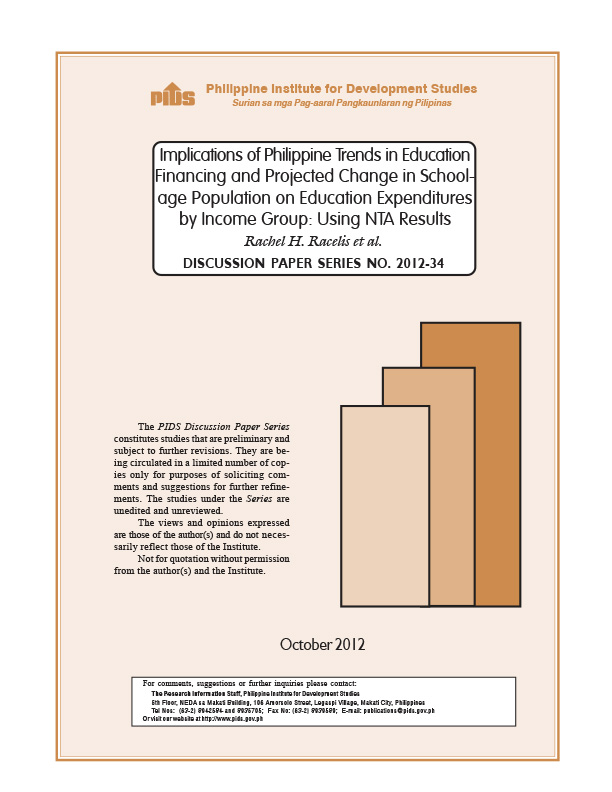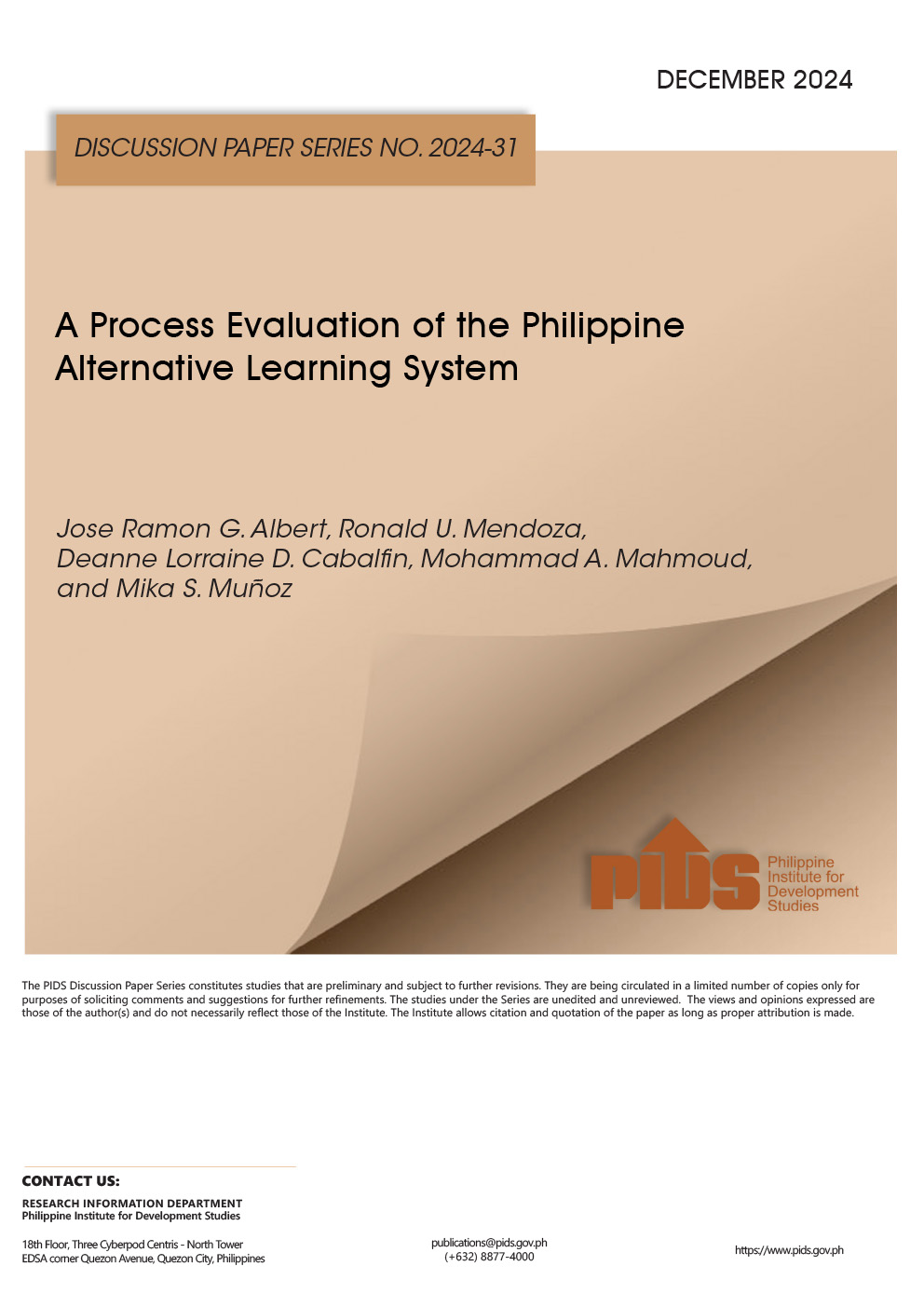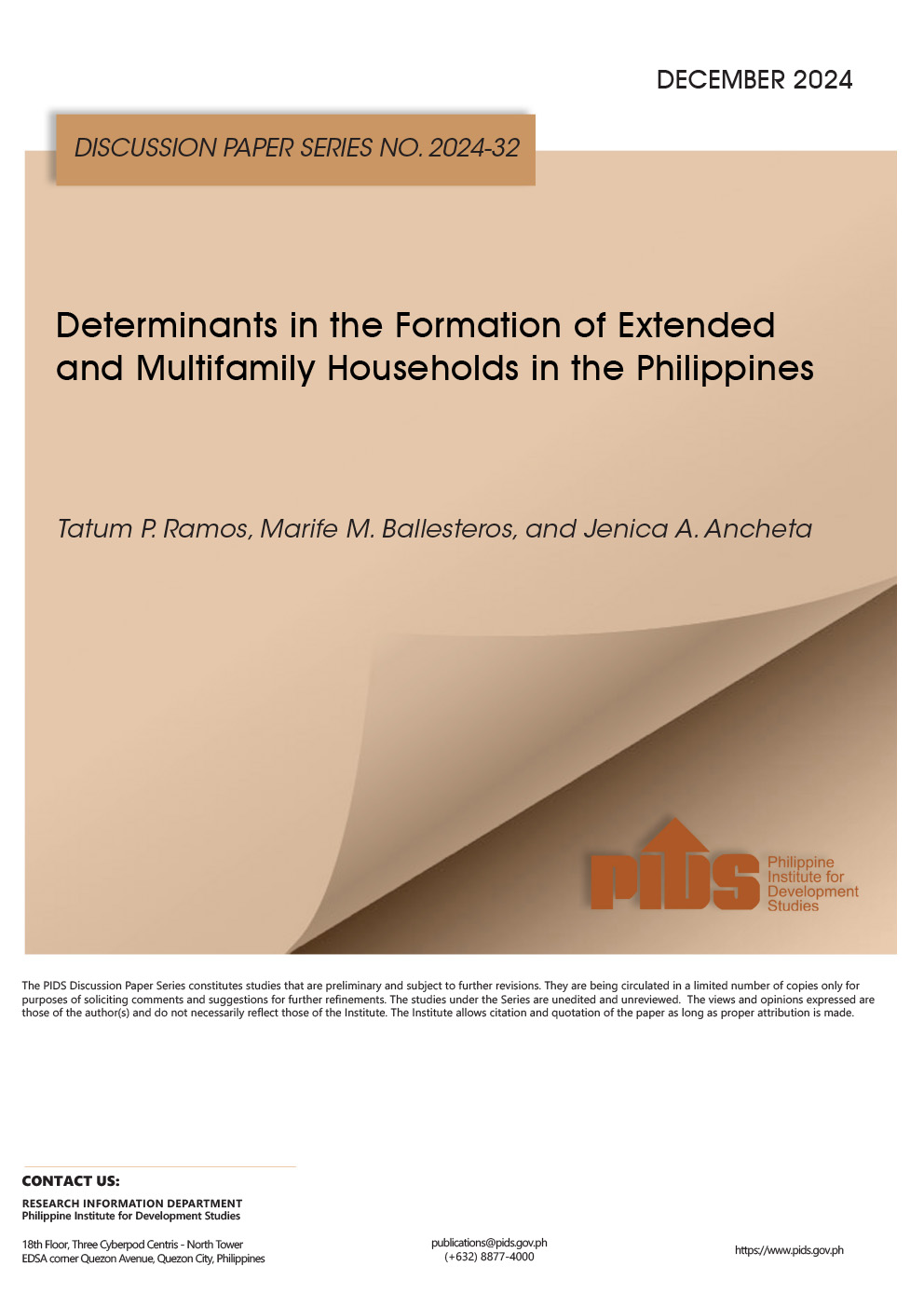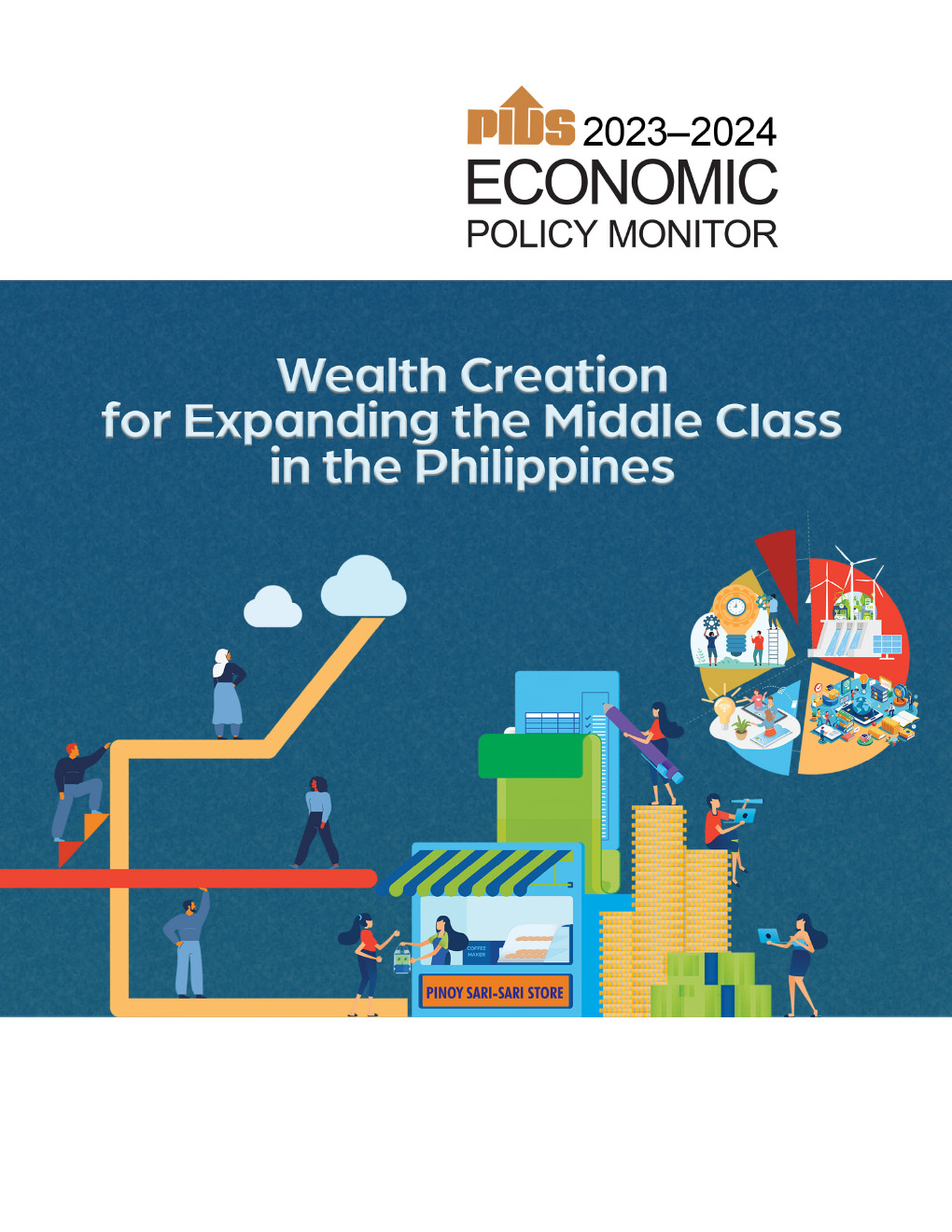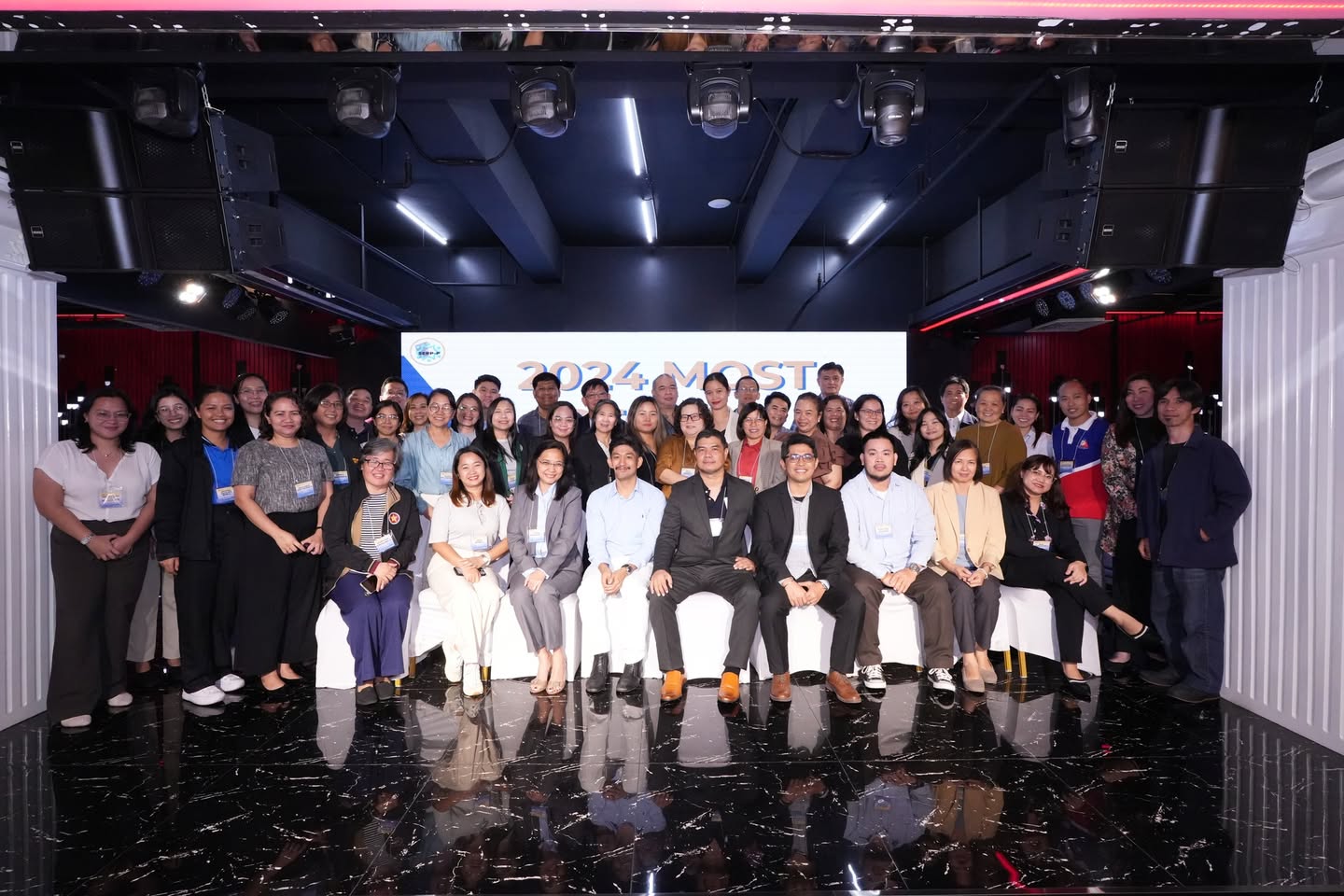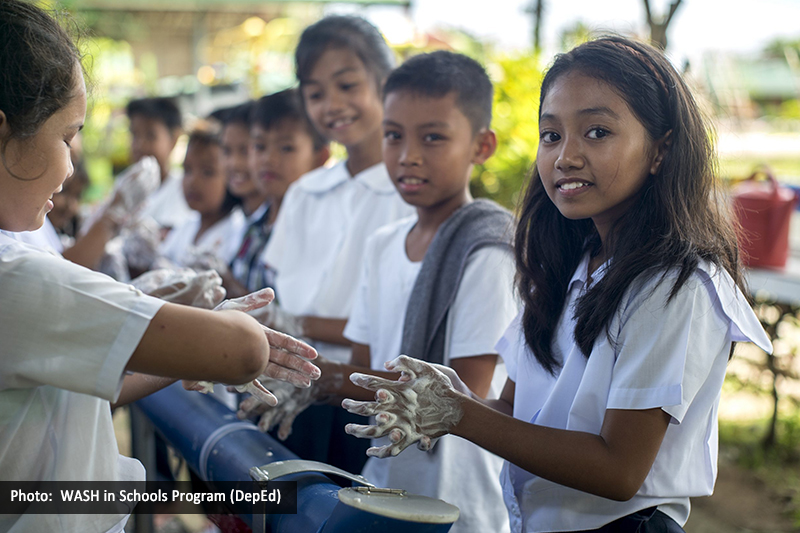Financing of education in the Philippines is mainly by the government (public) and by households (private), and since the 1990s there has been a shift in the public/private mix in education financing toward higher private share. Between 2007 and 2040 the schooling age population of the Philippines is projected to continue to increase in size and the age structure to shift toward higher proportion in the age group that attend the tertiary school level. This paper presents results of simulations of aggregate education consumption or expenditures by age and by income group for two hypothetical scenarios: simulations using an alternative education financing mix (alternative to the 2007 financing mix); and simulations using the 2040 school-age population (in place of the 2007 population).
The aggregate age profile simulations for the two scenarios are then compared with the 2007 actual aggregate age profiles to derive implications of the two sets of change on the education expenditures of the different income groups. The comparisons showed that the two changes, shift in education financing mix toward higher private share and change in school-age population age structure from 2007 to 2040, would among others result to reduced share of education resources and higher per capita private education cost for the bottom income tercile group.

